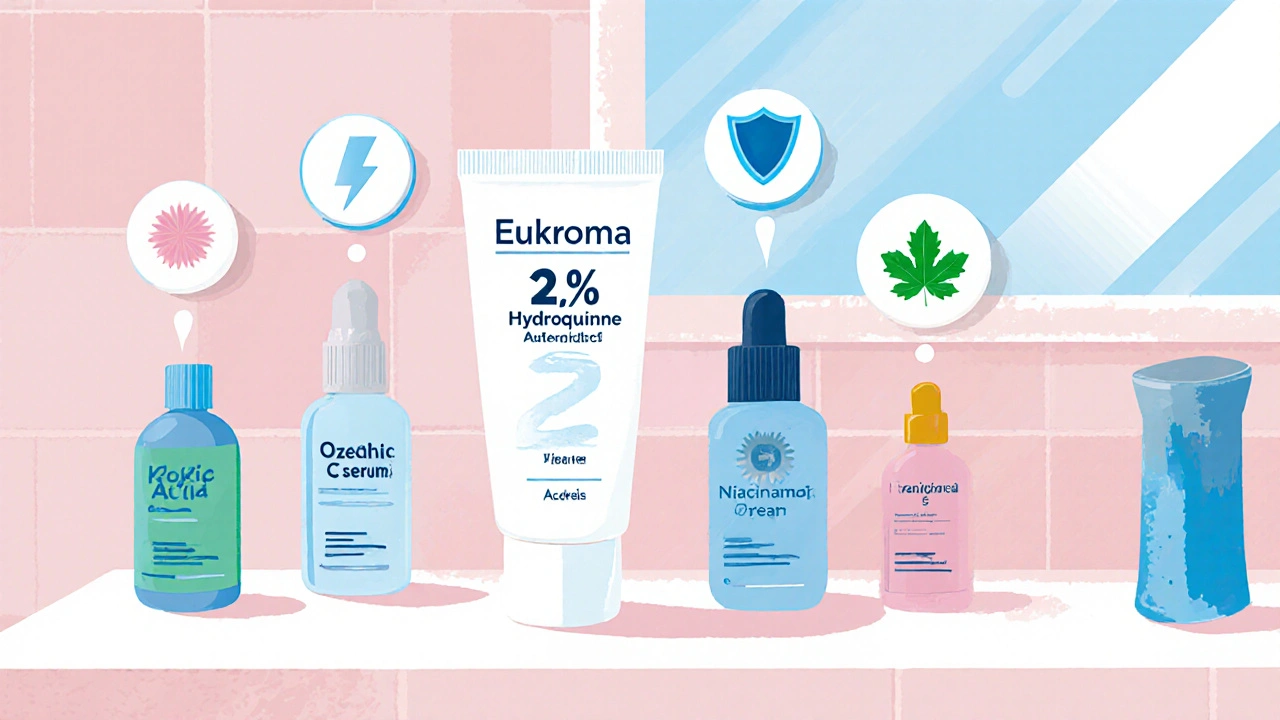Skin Brightening Made Simple: Your Go‑To Guide
Want a brighter, more even complexion without spending a fortune or juggling complicated steps? You’re in the right place. Below you’ll find straightforward advice on what causes dull skin, which ingredients actually work, and how to fit brightening into a daily routine you can actually stick to.
Why Your Skin Looks Dull
Several everyday factors steal your glow. Sun exposure triggers melanin production, leaving dark patches. Hormonal shifts, acne scars, and even harsh cleansers can over‑produce pigment. Finally, a lack of exfoliation means dead skin cells pile up, making the surface look flat.
Ingredients That Actually Brighten
Vitamin C – A stable, antioxidant form (like sodium ascorbyl phosphate) helps stop new melanin formation and brightens existing spots. Use a serum in the morning and follow with sunscreen.
Niacinamide – This vitamin B3 reduces pigment transfer and strengthens the skin barrier. It works well in both day and night creams.
Alpha‑Hydroxy Acids (AHAs) – Glycolic or lactic acid gently lift dead cells, revealing fresher skin underneath. Start with 5% concentration a few times a week to avoid irritation.
Licorice Extract – Contains glabridin, which blocks the enzyme that creates melanin. It’s a good choice for sensitive skin.
Retinoids – Prescription‑strength or over‑the‑counter retinol speeds up cell turnover. Pair with a good moisturizer because retinoids can dry out skin.
Mixing these actives isn’t always necessary; often a single, well‑formulated product gives enough boost. The key is consistency, not stacking every brightener at once.
Simple Daily Routine
Morning: Cleanse with a gentle, pH‑balanced wash, apply a Vitamin C serum, then a moisturizer with SPF 30+. Sunscreen is non‑negotiable – it prevents new spots from forming.
Evening: Remove makeup, cleanse again, then use a niacinamide or AHA product (alternate nights if you’re new to acids). Finish with a hydrating cream to seal in moisture.
For deeper stains, add a targeted treatment (like a licorice or retinol serum) 2‑3 times a week. Watch for irritation; if redness appears, cut back the frequency.
Lifestyle Hacks for a Radiant Look
- Stay hydrated – water helps skin flush out toxins.
- Eat antioxidant‑rich foods (berries, leafy greens) to support skin repair from the inside.
- Get enough sleep – growth hormone released at night aids cell turnover.
- Limit alcohol and smoking – both speed up pigment darkening.
Remember, brightening is a gradual process. Most people see noticeable improvement after 4‑6 weeks of consistent use. Patience and protection are your best allies.
Got a specific concern like melasma or post‑acne marks? Consider a dermatologist visit for prescription‑strength options. Until then, stick to the basics above, and you’ll be on your way to a smoother, more luminous complexion.
Eukroma Hydroquinone Cream vs Top Skin‑Lightening Alternatives: Pros, Cons & Best Choice
A clear, side‑by‑side comparison of Eukroma Hydroquinone Cream with popular skin‑lightening alternatives, covering how they work, pros, cons, costs, and who should use each.
Read moreTop Skincare Ingredients for Stopping Age Spots
Discover the most effective ingredients to prevent and treat age spots, how they work, and how to build a safe, brightening routine.
Read more

